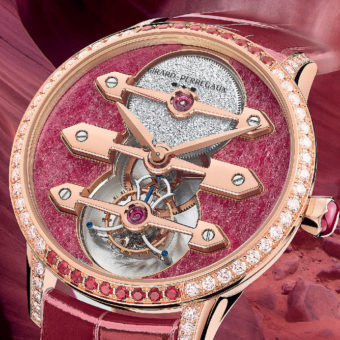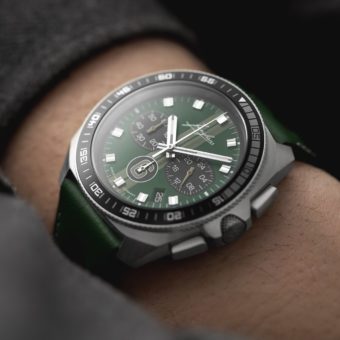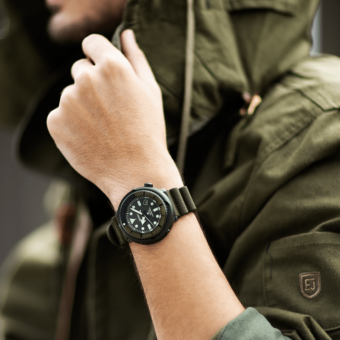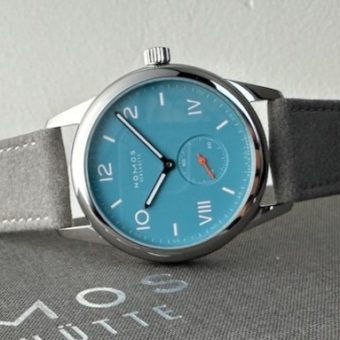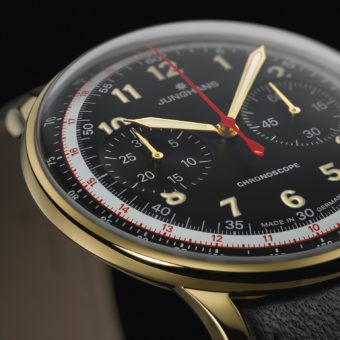The Bauhaus is turning 100 years old and watch brands are honoring the colorful heritage of this influential art school. In this feature from our WatchTime 2020 Design Special, on sale now, we explore the major contemporary timepieces with Bauhaus inspiration.
Bauhaus. The word is easy to say and everyone seems to have a vague idea of what it implies. Something cool. White. With clean lines. But these interpretations fall short of the full picture – something that’s being emphasized in this anniversary year – and the newest watch to celebrate the Bauhaus anniversary captures all this in a nutshell. Junghans introduced its Form A in mid 2019 as a straightforward stainless-steel automatic watch with small, colorful squares for hour markers. Subtle tones like turquoise, pink and violet join the primary colors blue, yellow and red that are most commonly associated with the Bauhaus movement, if the subject of color even comes up.

The interplay of color presented on the Form A displays one of the characteristic features that makes the Bauhaus so appealing, even today. The Bauhaus art school did not follow hard and fast design doctrines in order to develop a “Bauhaus style,” but experimented broadly with form, color and function. Rather than the austerity that we often associate with the Bauhaus, there was a playful interaction with creativity that never became haphazard, which we see reflected in the Junghans Form A. The cheerful colors of its markers correspond to the 12 tones on the “color sphere” developed by Bauhaus instructor Johannes Itten. The Form A also avoids any and all unnecessary decoration – its form is reduced to the essential features needed for the task of a wristwatch, i.e., telling the time.

Bauhaus Student Max Bill
Junghans has had extensive experience with these design ideas. This German company has not yet had 100 years of experience with the conceptual world of the Bauhaus, but it has been more than six decades since Max Bill designed a kitchen clock with an integrated timer for the Junghans company, one which would become an established part of design history, in 1956.
At that time, Max Bill had himself already become a decisive influencer of German design. This artist, designer and architect was born in Switzerland in 1908 and studied at the Bauhaus art school in Dessau, Germany, in 1927 and 1928. Fundamental ideas from this time shaped him his entire life – especially the notion that the design of one’s environment should make life better. From this basis came Bill’s often quoted idea of “good form.” In 1953, Max Bill became the first rector of the Ulm School of Design (HfG Ulm), housed in buildings he himself designed. The HfG made its mission to establish a new democratic design culture in postwar Germany and to continue the Bauhaus heritage. Max Bill occupied the position of rector until 1955 and remained active at the HfG until 1957. It was during this phase that he created the design for the Junghans kitchen clock – which was conceived in every detail to be the best possible fulfillment of function – and became the basis for many later clocks and watches, the most famous of which is the Max Bill wristwatch.

Today Junghans continues to offer models in its Max Bill collection that almost exactly mirror the original design, or are a careful interpretation. Max Bill created a perfectly round watch with a simple, unadorned design in the service of legibility with short minutes markers that are easily distinguishable from the longer five-minute markers, and with precisely proportioned hand lengths and luminous dots at the quarter hours. A secondary luminous dot was added to the full hour markers. The collection remains true to these design features.
The most surprising thing about Max Bill’s clock design is its almost radical modernity despite its considerably long lifespan. It seems that designs that are truly reduced to their essential features will have a timeless effect, regardless of fashion and trends. And it may appear that Max Bill created an archetypal three-hand watch that demonstrates that carefully implemented Bauhaus ideas can still work well today.
To mark the Bauhaus centenary, Junghans has added a few playful modifications to Bill’s archetype. Thanks to its dial design, the Max Bill Automatic 100 Jahre Bauhaus is immediately recognizable. The visual highlight of the 1,000-piece, limited-edition model is the red rectangular date window, a clever reference to the famous red door on the Bauhaus building in Dessau that Walter Gropius designed when political pressure caused the Bauhaus to move from Weimar to Dessau in 1925. The now-iconic building can be seen in detail through the transparent caseback with its red door, vertically arranged name and legendary glass facade. This facade is rendered here as a mesh that reveals a view of the ETA automatic Caliber 2824 within. The light gray silver dial and the anthracite-colored PVD-coated case are intended to suggest the walls and facade of the Bauhaus building, and the gray leather strap, the concrete building material.
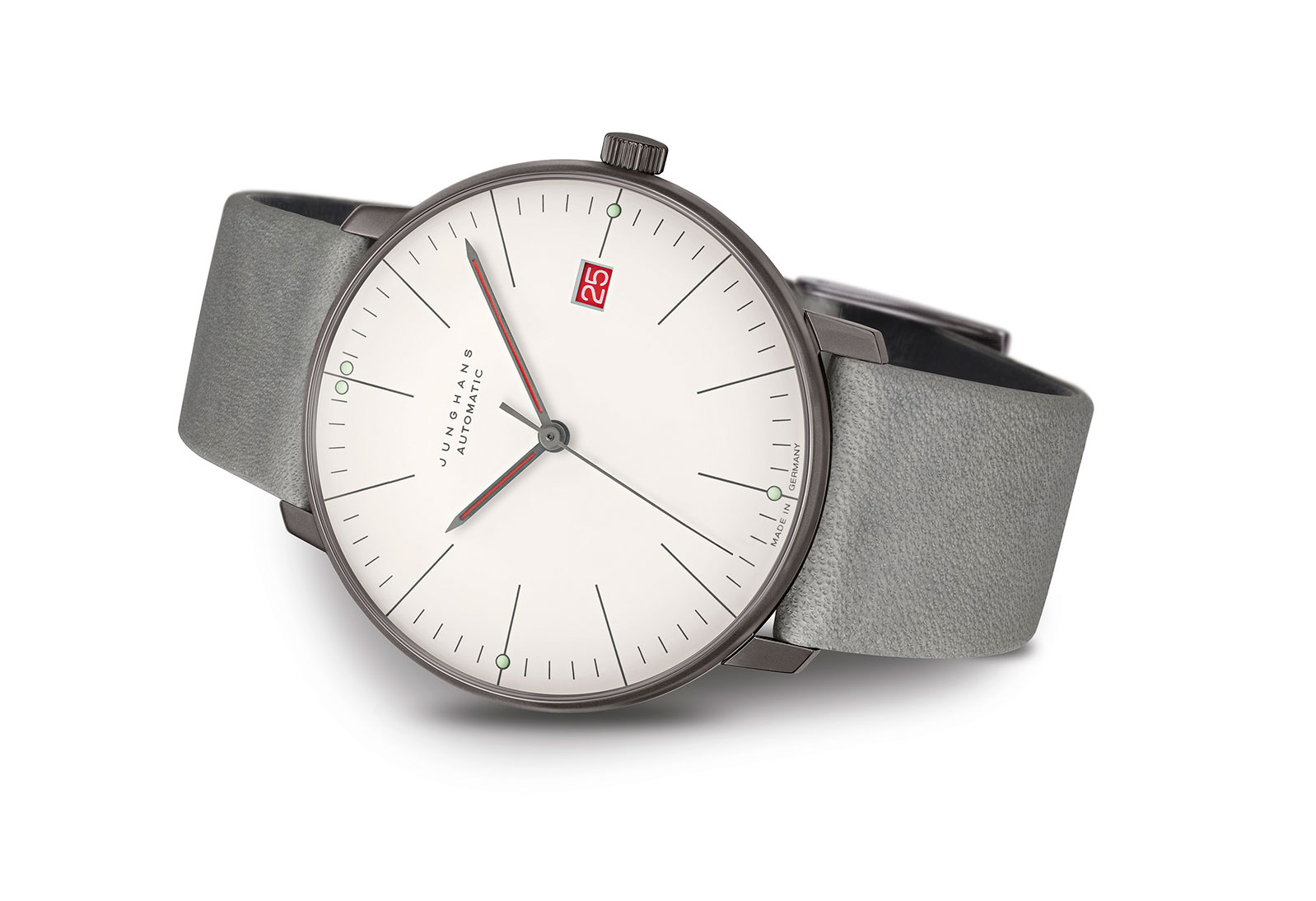
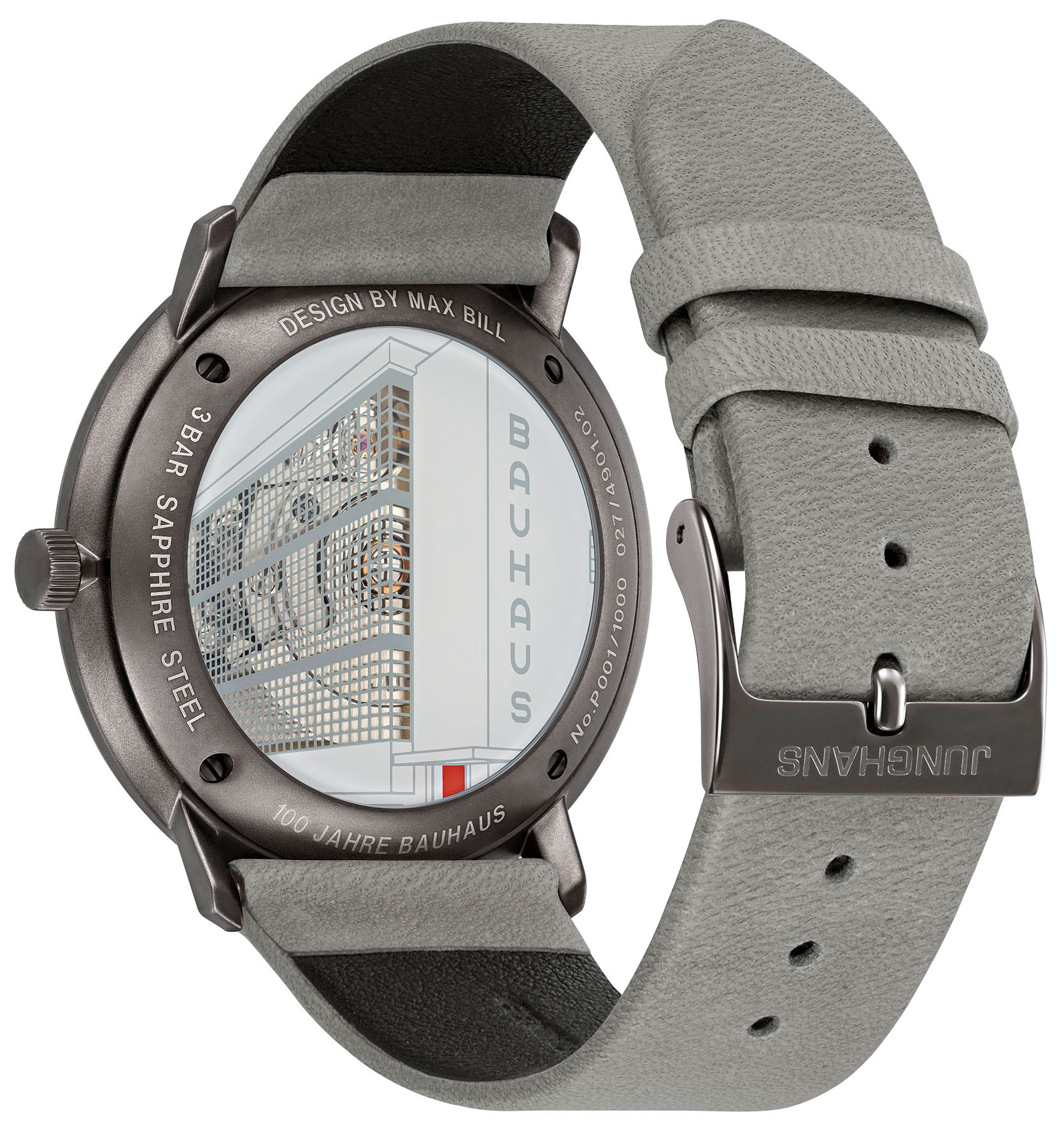
Bauhaus Aesthetics and the Tangente
Thanks to its history with Max Bill, Junghans was predestined to offer a horological contribution to the Bauhaus anniversary celebrations. Another German watch manufacturer that is consistently associated with Bauhaus is Nomos, particularly with its Tangente model. Nomos introduced the Tangente watch in 1992 with a design language that is often justifiably described as the “Bauhaus watch.” The minimalist case boldly puts forth basic geometric shapes – the straight sides and flat crystal suggest a flat disk sliced from a cylinder – as so many Bauhaus designs do. The simple dial combines line markers for the odd hours and numerals for the even hours. This underscores the functional impression of the watch while giving it a unique elegance, supported by the fine design of the narrow hands and displays and the typography of the numerals rooted in historical Bauhaus graphic design.
Not only is the typography older than the Tangente, its dial design predates the watch, too. In 1937 – when the Bauhaus had already shut its doors four years earlier under Nazi pressure – watch models from a variety of German brands had virtually identical dials. This can be traced to the structure of watch manufacturing at that time. Brand identity was rare; it was much more common to have several companies purchasing their dials from the same dial maker. The dial that now appears on the Tangente was produced by the German company Weber & Baral in Pforzheim in the 1930s in an almost identical form. A. Lange & Söhne in Glashütte used it, as well as Stowa in the Black Forest. And Stowa is using it again today.
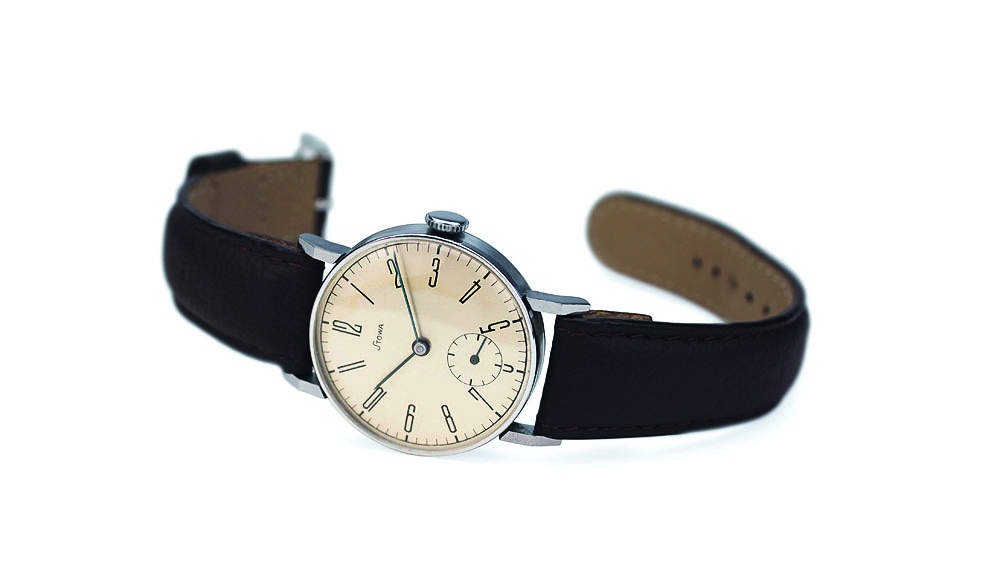
The Stowa company has been in existence since 1927. In 1996, Jörg Schauer purchased the brand, updated its profile and shifted its focus to its own history. In 2004, he issued the Antea, a new edition of the watch from 1937 with a dial that no longer simply mimicked a historical watch but also referred to a very successful modern design. Nomos, of course, had essentially introduced the Bauhaus-inspired dial to the modern day in 1992.
The Bauhaus Watch and the Apple Designer
Stowa wasn’t satisfied with just the one-time revival of a historical design. In 2015, Schauer sat down with another creative mind from the Black Forest who has become famous for a significant chapter in global design history. His ideas touch so many of us in our daily lives: Hartmut Esslinger. Esslinger was born in 1944 in southern Germany but worked in the 1980s with Steve Jobs on the early designs at Apple. Esslinger still lives in California but occasionally returns to the Black Forest to collaborate with Schauer on watches.
Esslinger believed in putting greater emphasis on the Bauhaus heritage of the Antea. He created the Antea Back to Bauhaus in collaboration with Schauer in 2015. First and foremost, Esslinger changed the typography of the Antea numerals, choosing Bauhaus Std, which was developed in the 1970s from an original Bauhaus font. Esslinger also replaced the line markers on the original Antea with dot markers. This created a dynamic, fuller and rounder overall image – an impression that is not surprising, coming from Esslinger. He is the person responsible for laying the foundation for the sensually rounded organic shape of Apple Design, that even today – long after Esslinger’s era at Apple – is one of the iconic design features of the iPhone, the Apple Watch and the packaging of the current Earpods.
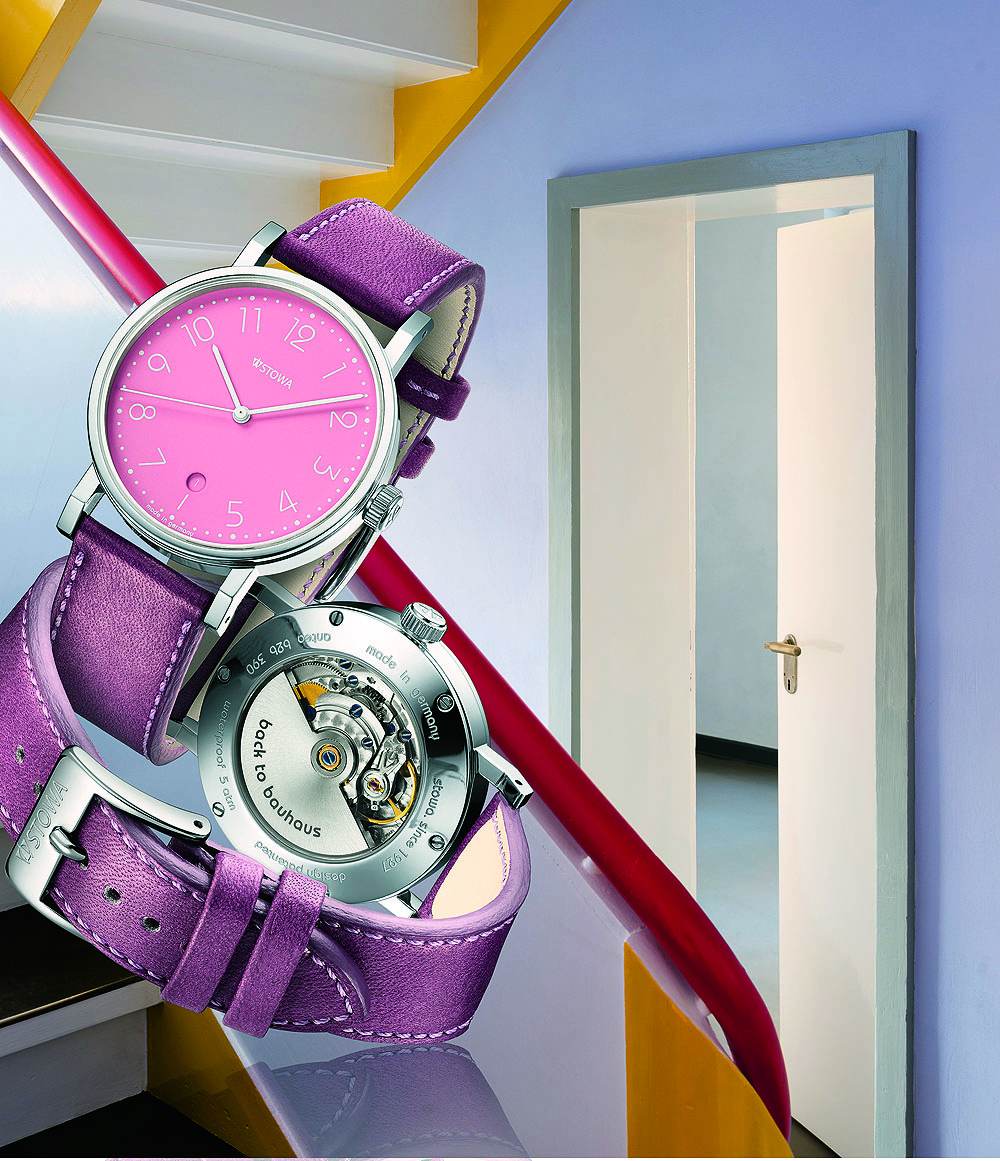
Esslinger also added color to the Antea. The designer is known for the pastel-colored shirts he wears at every appearance – he likes the “California” in these hues, he once said – and it’s just a small step from the Californian color palette to the Bauhaus color experimentation. So there’s a lime green, a sky blue and a raspberry-colored version of the Antea Back to Bauhaus. Like Junghans, Esslinger also relies on the color sphere designed by Bauhaus master Johannes Itten. He also has Josef Albers in mind – a student of Itten and later a Bauhaus master himself – who is known for his flat, finely nuanced pictures of colorful squares.
Color is always a central theme when the watch world concerns itself with the Bauhaus movement. Nomos introduced a Bauhaus watch in 2018. The Tangente “A Century of Bauhaus” is the name for a trio of watches with dials in a yellowed-parchment tone and circles around the dials of primary colors often associated with the Bauhaus. Nomos found inspiration for the 900-piece limited edition in sketchbooks from artist Paul Klee, who also taught at the Bauhaus school.
Bauhaus Watches – Different Approaches Today
We will never know what kind of watch would have been created if Klee and his colleagues had addressed the topic of timepieces. It would have been wonderful if there had been a true Bauhaus wristwatch – a model that an instructor or student had designed during the short lifespan of the school (it existed from 1919 to 1933) that one could simply imitate, modify or use to judge design standards. But there never was such a watch.
Anyone wishing to create a watch in the Bauhaus spirit can only approximate its design essence, perhaps by experimenting with the typical design elements of color, shape and typography. This can produce a certain retro feel like the Nomos watches, a playful design like the Form A watch from Junghans, or a look back in design history with references to a vintage model like the collaboration between Esslinger and Stowa.
The watch brands of today refer to more than just design elements from the Bauhaus. Even more important is its philosophy. Next in line in the Bauhaus spirit must be the timepiece that an early Bauhaus student designed years after attending the school – the Max Bill watch from Junghans. Then there is the Tangente, which easily gets to the heart of various facets of the Bauhaus aesthetic while still maintaining a contemporary feel. In this context, Nomos emphasizes that the company is a member of the Deutscher Werkbund, a German association of craftsmen founded in 1907 that included several important Bauhaus artists and shared many ideas with the Bauhaus. A high degree of design ethos was central for both.
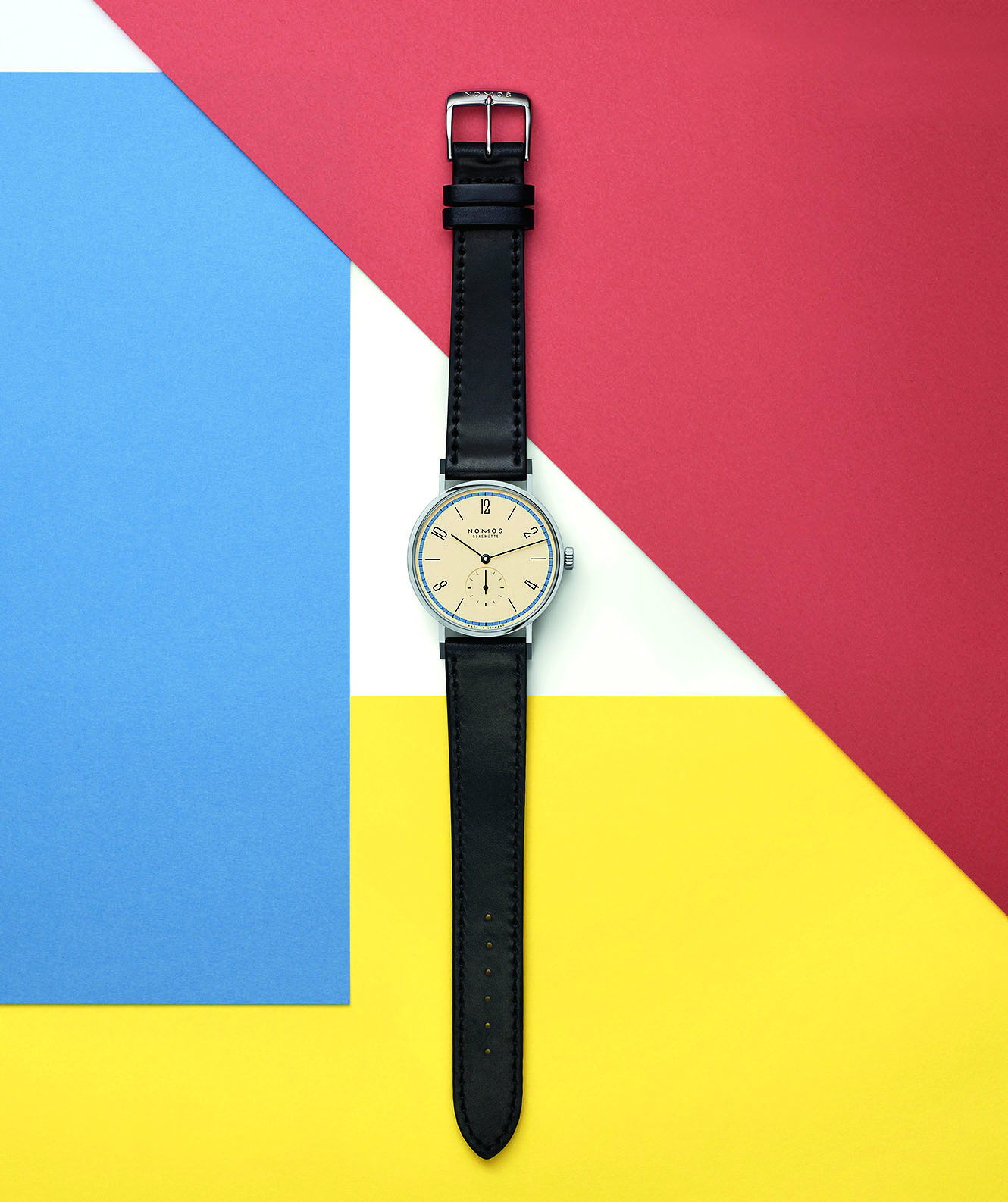
Keeping the Bauhaus Spirit Alive
Porsche Design watches do not look a bit like “Bauhaus reloaded,” but they still easily remain within the bounds of the Bauhaus mindset. Ferdinand Alexander Porsche designed the legendary Porsche 911 sports car for the family-owned automobile company, made a name for himself as a product designer in other areas and founded the Porsche Design brand. F. A. Porsche designed history’s first black watch as well as the first titanium watch – the latter for IWC – both in the spirit of functionality and for its user-friendliness. The advantage of lightweight titanium is immediately clear, but the use of black was more a matter of practicality. As a descendant of a family of automakers, F. A. Porsche had the clearly legible and low-reflective dashboard instruments of race cars in mind. And he had the same freely experimental spirit as the Bauhaus artists who approached their designs as though there were no conventions to follow, and so arrived at correspondingly novel results. Porsche did not develop his own design mentality in a vacuum – as a student at the Ulm School of Design he was exposed to the central ideas of modern and technically friendly design.
F. A. Porsche died in 2012 but the Porsche Design studio team in Austria’s Zell-am-See continues to work on his ideas. The current watch collection 1919, named for the year the Bauhaus was founded, is made of titanium and features dark colors with unconventional open angular lugs that make the watch appear to float on the wrist. This highlights the lightweight material while the technical look of the dial and its typography puts a focus on functionality. F. A. Porsche believed that the form would reveal itself when one concentrated on function – a notion with which many Bauhaus artists would have agreed. It’s a watch collection that shows performance through innovative design.

To the question of whether one can make attractive watches for modern consumers from the great achievements of modern design, Rado is ready with an answer. The new True Thinline Les Couleurs Le Corbusier is not dedicated to the Bauhaus artists but to one of their contemporaries who stood at the pinnacle of avant-garde design in the early 20th century. The Swiss architect Le Corbusier not only built villas, blocks of apartment houses and churches, he was also a painter and a furniture designer. Over the course of many years, he created and refined his own architectural color palette, whose copyright is protected by the Organisation Les Couleurs Suisse. Rado has entered into a partnership with this organization and has introduced nine monochromatic ceramic watches in Le Corbusier colors ranging from subtle to bright – the bracelet, case, dial, hands and markers are all the same color. The design of the True Thinline is as puristic, slim and supple as always and allows color to be the main focus.
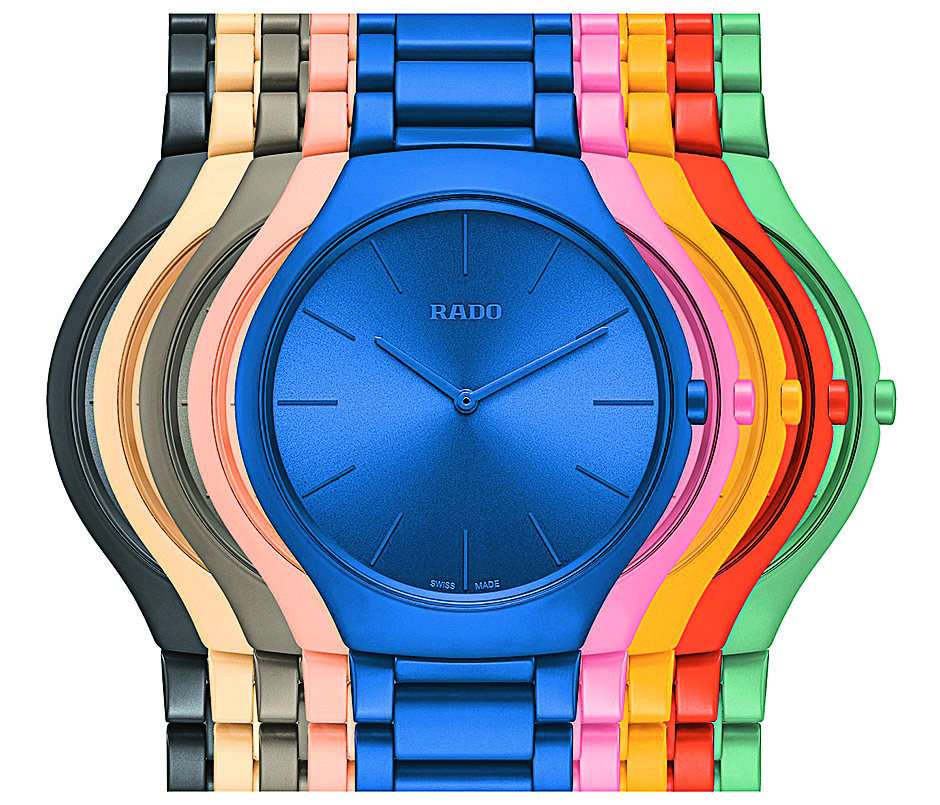
One doesn’t need to know much about Le Corbusier or design history to enjoy one of these vibrantly colorful watches. Like the Bauhaus-inspired watches from Junghans, Nomos, Stowa and Porsche Design, they succeed in picking up on the spirit and ideas of these great founders of modern design and making them rich and workable for the present day, without any thought of putting them in a museum.

